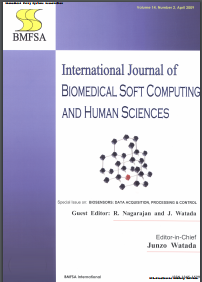Volume 13, Issue 2
Displaying 1-14 of 14 articles from this issue
- |<
- <
- 1
- >
- >|
-
Article type: Article
2008 Volume 13 Issue 2 Pages 1-
Published: 2008
Released on J-STAGE: September 04, 2017
Download PDF (128K) -
Article type: Article
2008 Volume 13 Issue 2 Pages 3-9
Published: 2008
Released on J-STAGE: September 04, 2017
Download PDF (547K) -
Article type: Article
2008 Volume 13 Issue 2 Pages 11-16
Published: 2008
Released on J-STAGE: September 04, 2017
Download PDF (928K) -
Article type: Article
2008 Volume 13 Issue 2 Pages 17-26
Published: 2008
Released on J-STAGE: September 04, 2017
Download PDF (1088K) -
Article type: Article
2008 Volume 13 Issue 2 Pages 27-34
Published: 2008
Released on J-STAGE: September 04, 2017
Download PDF (882K) -
Article type: Article
2008 Volume 13 Issue 2 Pages 35-41
Published: 2008
Released on J-STAGE: September 04, 2017
Download PDF (642K) -
Article type: Article
2008 Volume 13 Issue 2 Pages 43-50
Published: 2008
Released on J-STAGE: September 04, 2017
Download PDF (909K) -
Article type: Article
2008 Volume 13 Issue 2 Pages 51-57
Published: 2008
Released on J-STAGE: September 04, 2017
Download PDF (803K) -
Article type: Article
2008 Volume 13 Issue 2 Pages 59-66
Published: 2008
Released on J-STAGE: September 04, 2017
Download PDF (1341K) -
Article type: Article
2008 Volume 13 Issue 2 Pages 67-74
Published: 2008
Released on J-STAGE: September 04, 2017
Download PDF (1125K) -
Article type: Article
2008 Volume 13 Issue 2 Pages 75-81
Published: 2008
Released on J-STAGE: September 04, 2017
Download PDF (821K) -
Article type: Article
2008 Volume 13 Issue 2 Pages 83-88
Published: 2008
Released on J-STAGE: September 04, 2017
Download PDF (712K) -
Article type: Article
2008 Volume 13 Issue 2 Pages 89-94
Published: 2008
Released on J-STAGE: September 04, 2017
Download PDF (1167K) -
Article type: Article
2008 Volume 13 Issue 2 Pages 95-100
Published: 2008
Released on J-STAGE: September 04, 2017
Download PDF (957K)
- |<
- <
- 1
- >
- >|
